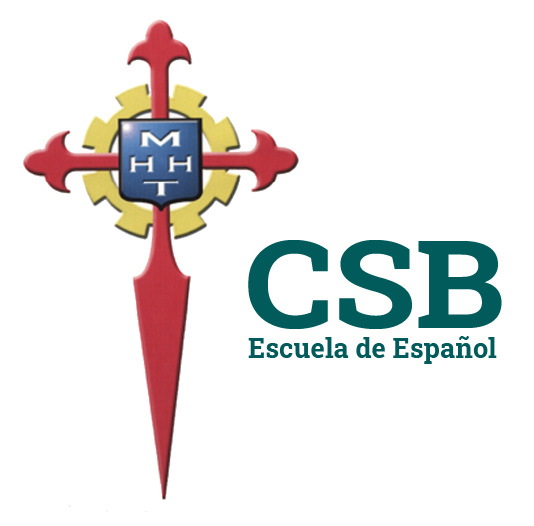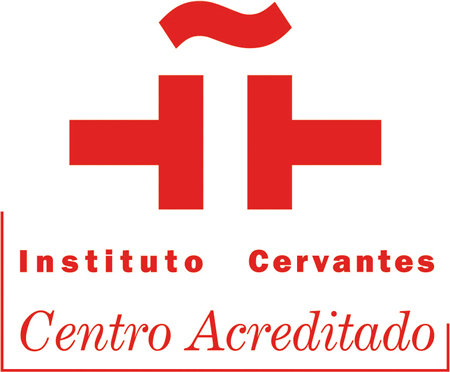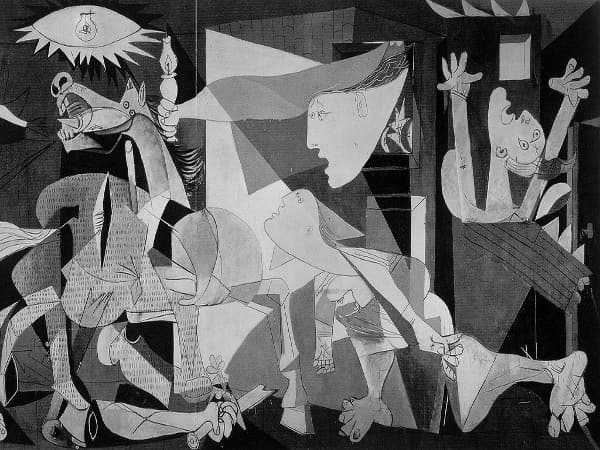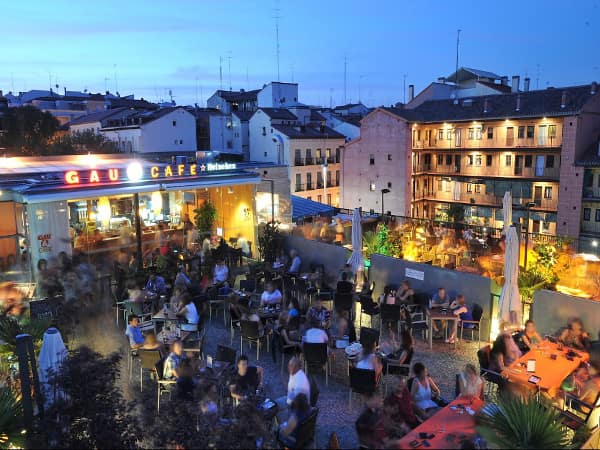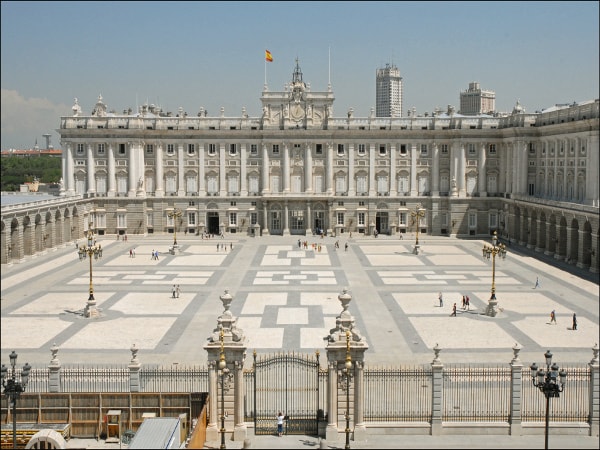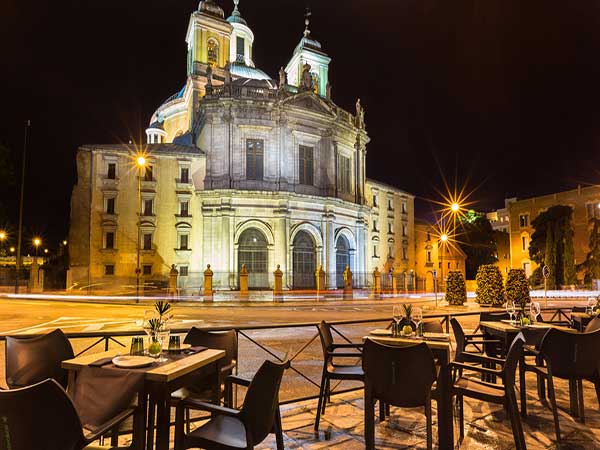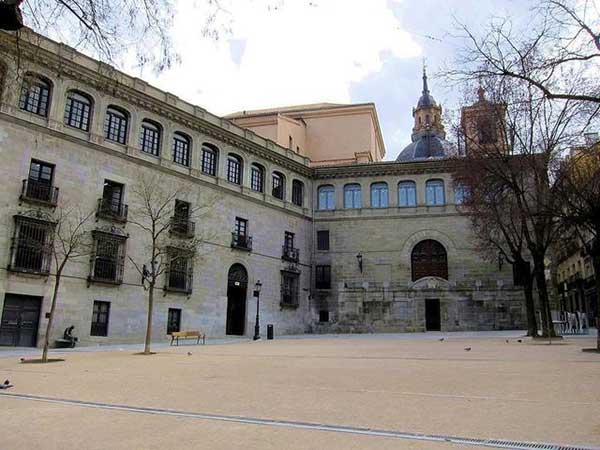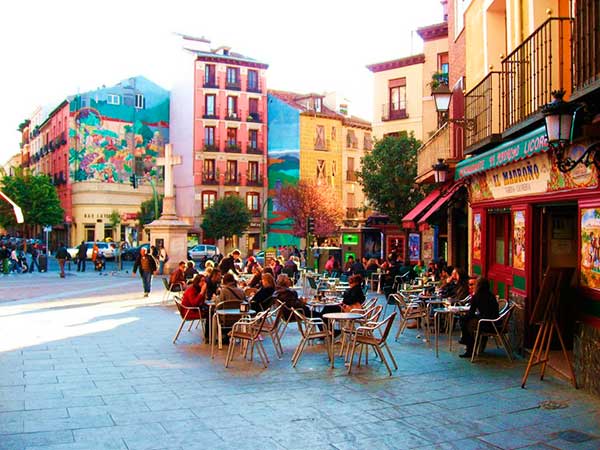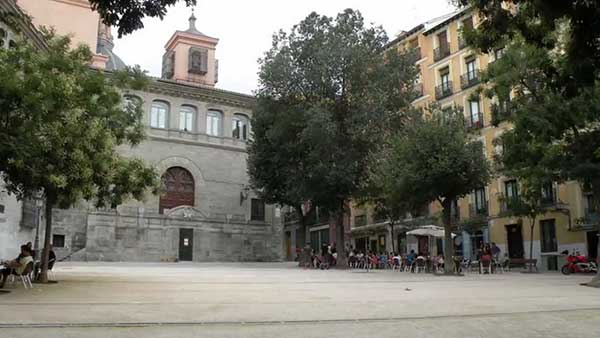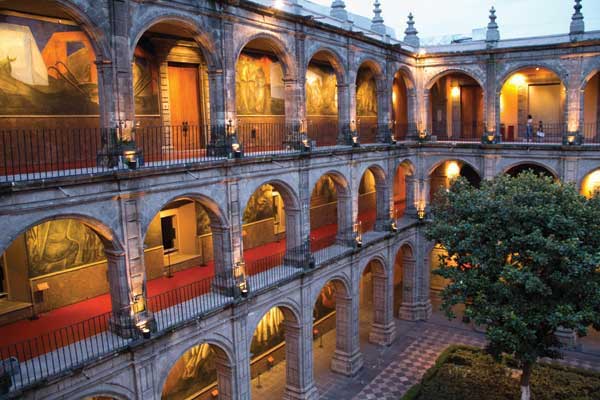SANTA BÁRBARA SPANISH SCHOOL FOR FOREIGNERS, LOCATED RIGHT IN THE HISTORIC CENTER OF MADRID
Madrid, the best place to learn Spanish
Because we have Art (Picasso, Goya, the Prado Museum, the Thyssen Museum…).
Because you will enjoy its tapas bars, its summer terraces, its blue skies.
Because you will love Madrid’s nightlife with its multicultural and cosmopolitan atmosphere.
Because it is a city that never sleeps, and where you will always have things to do, from enjoying the city with its historical sites to walking in the mountains
Because it is also the city of fashion, you can go shopping in its most popular stores.
Because you can practice sports in its parks such as Retiro Park, Sabatini Gardens, Madrid River, Royal Botanical Gardens, Temple of Debod Gardens and “many more”…
Plaza de la Paja
The Plaza de la Paja, formerly owned by the Marquis of Comillas, is located in the heart of Madrid de los Austrias. It was so called because the straw that was given to the canons of the neighbouring Bishop’s Chapel for the maintenance of the mules they owned was auctioned there. Because of its location, spaciousness and the buildings that surrounded it, it was the true center of the interior life of the neighborhood and the main and most important square of the town during almost all the Middle Ages, until in the time of John II, the Plaza del Arrabal was formed on the Luján lagoon, which later would become the Plaza Mayor of the court of Spain. Since the 13th century it has been the commercial centre as a market place in the city.
The main noble families of Madrid lived here. Palaces such as those of the Lasso de Castilla, the Vargas, the Marqués de la Romana or the Palace of Isabel la Católica, so called because the Catholic Kings lived in this square, but it is an inaccurate statement, since the Kings lived in the Palace of the Lasso de Castilla, which was located very close and in the same square.
The square is an irregular enclosure that saves a considerable slope, caused by the ravine of the disappeared stream of San Pedro, in whose bed is now the street Segovia. Now the square is a group of buildings of historical and artistic interest, both religious and civil.
In the northern area of the square, we can find the wonderful Bishop’s Chapel, which is attached to the Palacio de los Vargas. This chapel belongs to the religious complex of San Andrés, where there was an elevated passageway that joined the parish with the Palacio de los Lasso, through which the kings entered the private area of the church where they could hear mass.
Palacio de los Lasso
It was the largest in the district, whose construction must have been initiated by Don Pedro of Castile, who was the great-grandson of King Don Pedro, who settled in Madrid in 1494 and was already married to Dña. Catalina Lasso, daughter of the Lord of Mondéjar, and later became the property of the Dukes of Infantado. In this palace resided the Catholic Kings and Cardinal Cisneros, who received in it the Junta de Grandes, who demanded that he show the powers he had to reign, to which the cardinal answered, opening the balconies and showing the army and artillery located in the square:
“With these powers the king gave me government and I will rule Spain until the prince comes.”
Colegio de San Ildefonso
Its site was occupied by the palace of Don Beltrán de la Cueva, belonging since 1510 to the Lujanes de la Morería. In the 19th century it was the provisional palace-residence of the Salesas Reales when they were forced to evict the monastery of Dña. Bárbara de Braganza in 1870, residing there until 11 years later, when they moved to their new convent in the street of Joaquín García Morato.
Once the building was abandoned, the corresponding adaptation works were carried out to move the San Ildefonso School, which was already fully operational in 1884. According to documents, between 1533 and 1543 it enjoyed royal protection at all times, and in 1478 professional and religious education was already being provided for the poor children who attended the school. Since March 9, 1771, the children of this school have been singing for the National Lottery prizes.
